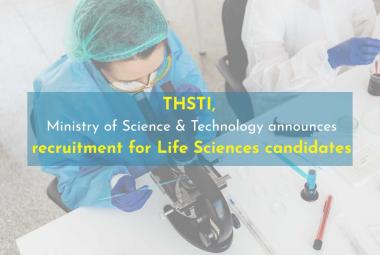{ DOWNLOAD AS PDF }
 ABOUT AUTHORS:
ABOUT AUTHORS:
Abdul Waheed1*, Ankit Gupta2, Parth Patel3
1Department of Pharmacology
2Department of Pharmaceutics
3Department of Drug Regulatory Affair
Amity Institute of Pharmacy, Amity University, Noida-125, U.P. (INDIA)
abdul.waheed2050@gmail.com
ABSTRACT
In the present scenario, lung cancer is one of the most prevalent and malignant cancer especially among the smoking group of people. The targeted delivery of chemotherapeutic agents to the lungs represents a novel therapeutic approach in lung cancer. Lung is an ideal route for administration of anticancer drug as it provides larger alveolar surface area, low thickness of epithelial barrier & extensive vascularization. Nanoparticles with nanocarriers have possibility of cell-targeted drug delivery with minimal systemic side effect and toxicity. Pulmonary epithelial cell, enzymes, receptors and genes are the target of the targeted drug delivery in lung cancer. This paper reviews the till date targeted drug delivery research performed for the treatment of lung cancer.
[adsense:336x280:8701650588]
REFERENCE ID: PHARMATUTOR-ART-2314
|
PharmaTutor (ISSN: 2347 - 7881) Volume 3, Issue 2 How to cite this article: A Waheed, A Gupta, P Patel; Targeted Drug Delivery Systems for Lung Cancer; PharmaTutor; 2015; 3(2); 38-42 |
INTRODUCTION
Lung cancer is the most chronic disease among the all other airways and lung disease and one of the leading cause of death worldwide [1]. Lung cancer is common in both men and women having exposure to both direct and indirect smoking group. In 1975 the 5-year relative survival rate for all patients with lung cancer was 13%. In 1996 to 2003 the 5-year survival rate increased to 16% despite the incorporation of modern chemotherapy regimens and great advances in supportive care [2]. And in recent 5-year survival rate for all patients with lung cancer is 15% [3]. The rapid changes in life style, urbanization, and environmental degradation, smoking habit, increasing elderly population in developed countries etc., are all contributing toward the increase in patients with airway diseases [4]. Pulmonary diseases are treated by maintaining high and prolonged drug concentration in lungs either administered by pulmonary route or systemic route. The long-term survival rate of lung cancer patients treated by conventional approaches such as surgical resection, radiation, and chemotherapy remains far from satisfactory [5]. Lung cancer cells are generally classified as small-cell (SCLC) or non-small-cell lung carcinomas (NSCLC). NSCLC is further subdivided into adenocarcinomas (AD), large-cell carcinomas (LC), and squamous cell carcinomas (SQ). Systemic drug delivery of anticancer drugs have narrow safety range spectrum because limited amount of drug reaches to the target tumor site. Targeted drug delivery of anticancer drug on tumor site in lungs improves the therapeutic effect because it decreases the systemic exposure of drug. Lungs provide large surface area (about 100m2) and high vascularization which rapidly distribute the molecules. Lungs exhibit relatively low local metabolic activity and unlike the oral route of drug administration, pulmonary inhalation is not subject to first-pass metabolism [6].
Recently the interest to develop pulmonary drug delivery system suitable for lung cancer has been increased. There are various nanometer and micrometer-sized drug carrier system has been investigated for the treatment of lung cancer like nanoparticle, polymer conjugates, polymeric micelles, inhalation nanoparticle, Solid lipid nanoparticles, Lipid nanocapsules, Polymeric nanoparticles, Lipid-coated nanoparticles, Nanostructured lipid carriers, Nanocomposite particles, Liposomal drug delivery system, Microparticles, and Inhalation gene therapy [7].
[adsense:468x15:2204050025]
NANOTECHNOLOGY USED IN LUNG CANCER
Nanoparticle technology had emerged on the commercial scale when the first product using NPs, Abraxane, an injectable suspension of albumin NPs with bound paclitaxel was used for cancer therapy, and became available in 2005 [8]. NPs having the property such as small particle size, large surface area, and the capability of changing their surface properties have several advantages compared to other delivery systems [9]. Nano-sized carriers are not used intravenously because of accumulation in the liver cell which significantly reduces the amount of drug that reaches to the tumor site [5]. Therefore, targeted aerosolized NP delivery is used in lungs which will bypass the presystemic metabolism. Helmut Ringsdorf proposed the concept of polymer-drug conjugates in 1975 and the subsequent success of N-(2-hydroxypropyl) methacrylamide (HPMA) copolymer-doxorubicin conjugate (named “PK1”) in clinical trials[10]. Polymer based nanocarriers have good drug solubilityhigh drug-loading capacity, improve therapeutic efficacy, and reduce systemic toxicity. Docetaxel (DTX) is a cytotoxic agent which has been proven to have significant antitumor activity against various human cancers.Nowadays, widely researched polymers for Docetaxel (DTX) delivery have been investigated include polyethylene glycol (PEG), polyglutamic acid (PGA), polylactic-co-glycolic acid (PLGA), HPMA copolymers, and polysaccharides (eg, chitosan, cyclodextrin).
PULMONARY ANTI CANCER DRUG LOADING TO NANOCARRIER
Videira et al. carried out the preclinical evaluation (in experimental mouse mammary carcinoma) of a pulmonary delivered paclitaxel-loaded lipid nanocarrier for an antitumor effect [7,11]. The paclitaxel loaded solid lipid NP treatment was more effective in decreasing the number and size of lung metastases, in comparison with the treatment using intravenous administration of the same drug usingthe conventional formulation. Xiang-Hong Peng et al. developsingle chain variable fragmentanti-EGFR antibody (ScFvEGFR)-Heparin-Cisplatin Nanoparticles for the delivery of Cisplatin in lung cancer therapy [12]. Hureaux et al. developed lipid nanocapsules (LNCs) for the aerosol delivery of paclitaxel [13]. Azarmi et al. develop dry powder formulation of doxorubicin (DOX) encapsulated in NPs [7]. Hitzman et al. formulated an in vivo pulmonary delivery of 5-fluorouracil (5-FU) in lipid-coated nanoparticles (LNPs) system to a hamster model [14]. Patlolla et al. prepared celecoxib-nanostructured lipid carrier (Cxb-NLC) NPs by the hot melt homogenization technique [15]. Anabousi et al. carried out in vitro assessment of transferring- conjugated DOX-loaded liposomes as drug delivery systems for inhalation therapy of lung cancer [16]. Alipour et al. prepared biodegradable paclitaxel loaded alginate microparticles by the emulsification/gelation method and assessed the in vitrocytotoxicity activity of paclitaxel loaded microparticles using human non-small cell lung cancer cell lines (A549 and Calu-6) [7]. Verma et al synthesized and characterized a biocompatible drug delivery vehicle and coated with Fe3O4 magnetic nanoparticles (MNPs) with a polymer poly(lacticco-glycolic acid) (PLGA) and was loaded with a potential anti-cancer drug quercetin and their suitability for targeting lung cancer cells was evaluatedvia nebulization [17].
LIPID-BASED NANOCARRIERS
Liposomes, micelles, and lipid nanoparticles are the major classes of lipid-based nanocarriers for drug delivery system. Liposomes are becoming increasingly more popular delivery vehicles for anticancer therapeutics due to their strong biocompatibility properties. Liposomes also serve as a biodegradable pulmonary reservoir that enhance pulmonary residence time, decrease mucociliary clearance of drugs, prevent local irritation, and increase drug potency [18]. In 2004, Boulikas developed a liposome-based cisplatin drug called Lipoplatin to reduce systemic toxicity of cisplatin [19]. Liposomal formulations have long-term instability as major drawback thus; liposomes can be freeze-dried or spray-dried to improve the stability and can be formulated as liposomal dry powder for inhalational pulmonary delivery. According to a recent report, lipoplatin is anticipated to complete phase III clinical trial testing in 2013 and 2014 [3]. Table 1 lists current examples of liposomal formulations undergoing clinical trials intended for the treatment of cancer.
POLYMERIC NANOPARTICLES
Polymeric nanoparticles are synthesized from polymers. Now a days various biodegradable polymers have been developed such as poly(lactic acid)(PLA), poly(lactic-co-glycolic) acid (PLGA), gelatin, albumin, chitosan, polycaprolactone, and poly-alkyl-cyanoacrylates. And theyhave used in popularity because of their controlledand sustained release properties, subcellular size, and biocompatibility. Polymer nanoparticles have been extensively used for delivering targeted chemotherapeutics to lung cancer. Tseng et al. [20] developed a gelatin nanoparticle system decorated with EGFR-targeted biotinylated EGF (bEGF). These nanoparticles demonstrated enhanced cellular uptake in EGFR over expressing cancer cell lines holding promise for targeted lung cancer therapy. Recently, Jiang et al. [21] investigated different polymer-based nanoparticles composed of polycaprolactone (PCL) that were surface modified with chitosan polymer for oral administration of chemotherapy in lung cancer. Polymers have mucoadhesive properties that increased the therapeutic effect of anticancer drugs by selectively interacting with the increased levels of mucin expressed in cancer cells compared to normal cells.
METAL-BASED NANOPARTICLES
Noble metals such as gold and silver have been extensively investigated for clinical applications, including their use in sensitive diagnostic imaging, detecting, and classifying of lung cancer [22]. Peng et al. [23] developed a gold nanoparticle-based biosensor system with the capacity to detect lung cancer by analyzing an individual’s exhaled breath.
OTHER NANOPARTICLE SYSTEMS
There are various other nanoparticle such as Magnetic nanoparticles, Mesoporous silica nanoparticles (MSNs), Lipid nanocapsules, Lipid-coated nanoparticles, and Nanocomposite particles etc. have been investigated and applied in diagnosis and treatment of various cancers. In anticancer drug delivery system mesoporous silica nanoparticles (MSNs) have been increasingly used in research due to their dynamic capacity for drug loading, controlled drug release property, and multifunctional ability [3].
GENE THERAPY USED IN LUNG CANCER
In lung cancer there are various genetic changes, including chromosomal abnormalities, point mutations, and/or DNA methylation. Galimberti et al [24] design Cyclin E, Cdk-1 and Cdk-2 were individually targeted for repression with siRNAs in lung cancer cell lines. Treatment with the Cdk-2 kinase inhibitor seliciclib reduced lung cancer formation in a murine syngeneic lung cancer model and decreased immunohistochemical detection of the proliferation markers Ki-67 and cyclin D1 in lung dysplasia spontaneously arising in a transgenic cyclin E-driven mouse model. Recently, it has been reported that MicroRNAs (miRNAs) could possibly play a critical role in cellular processes like regulation of cell growth, differentiation, and apoptosis, emphasizing their role in tumorigenesis [25].
Table 1: Ongoing clinical trials of a few liposomal nanoformulation used cancer chemotherapy [26].
|
Trade name/composition |
Indication |
phase |
Stage |
|
Doxil/CAELYX Liposomal Doxorubicin |
Malignant female reproductive system neoplasm, Ovarian Cancer |
I |
Active |
|
Liposomal Cytarabine |
Central nervous system malignancies, Stage IV breast cancer |
II |
Active |
|
CPX-351 Liposomal Cytarabine-Daunorubicin |
Acute myeloid leukemia |
I |
Active |
|
Liposomal Vincristine |
Acute lymphoblastic leukemia |
II |
Active |
|
IHL-305 Irinotecan Liposome Injection |
Advanced solid tumours |
I |
Active |
CONCLUSION
Targeted drug delivery is very useful as it improves the therapeutic outcome when treated lung cancer. In recent year the development of molecule targeted drug has progressed remarkably and neumerous clinical studies have been carried out on molecular targeted drugs for cancer treatment. They also provide more safety and highly efficacious treatment of lung cancer.
ACKNOWLEDGEMENT
I would like to thank Dr. Satyendra K Rajput, Dr. Sumeet Gullaiya along with Ms. Preeti Gautam and all other friends for their immense support. Execution of the idea was not possible without the motivation and emotional encouragement during literature survey and writing manuscript.
REFERENCES
1. Molina JR, Yang P, Cassivi SD, Schild SE, Adjei AA. Non-small cell lung cancer: epidemiology, risk factors, treatment, and survivorship. Mayo Clin Proc. 2008; 83: 584–94.
2. Katzel JA, Fanucchi MP, Li Z. Recent advances of novel targeted therapy in non-small cell lung cancer. J HematolOncol. 2009; 2: 2.
3. Babu A, Templeton AK, Munshi A, Ramesh R. Nanoparticle-Based Drug Delivery for Therapy of Lung Cancer: Progress and Challenges. Journal of Nanomaterials Volume 2013, Article ID 863951, 11 pages.
4. Hirokawa K. International symposium on airway diseases: Etiology to clinic. 2012
5. Roa WH, Azarmi S, Al-Hallak MH, Finlay WH, Magliocco AM, Lobenberg R, et al. Inhalable nanoparticles, a non-invasive approach to treat lung cancer in a mouse model. J Control Release.2011;150: 49–55.
6. Pilcer G, Amighi K. Formulation strategy and use of excipients in pulmonary drug delivery. Int J Pharm. 2010; 392:1–19.
7. Goel A, Baboota S, Sahni JK, Ali J. Exploring targeted pulmonary delivery for treatment of lung cancer. Int J Pharm Investig. 2013 Jan-Mar; 3(1): 8–14.
8. Sung JC, Pulliam BL, Edwards DA. Nanoparticles for drug delivery to the lungs. Trends Biotech. 2007; 25: 563–70.
9. Azarmi S, Roa WH, Lobenberg R. Targeted delivery of nanoparticles for the treatment of lung diseases. Adv Drug Deliv Rev. 2008; 60: 863–75.
10. Anabousi S, Bakowsky U, Schneider M, Huwer H, Lehr CM, Ehrhardt C. In vitro assessment of transferrin-conjugated liposomes as drug delivery systems for inhalation therapy of lung cancer. EurJPharm Sci. 2006; 29: 367–74.
11. Videira M, Almeida AJ, Fabra A. Preclinical evaluation of a pulmonary delivered paclitaxel-loaded lipid nanocarrier antitumor effect. Nanomed. 2012 Oct; 8(7): 1208-15.
12. Peng XH, Wang Y, Huang D, Wang Y, Shin HJ, Chen Z, Spewak MB, Mao H, Wang X, Chen Z,Nie S, and Shin DM. Targeted Delivery of Cisplatin to Lung Cancer Using ScFvEGFR-Heparin-Cisplatin Nanoparticles. ACS Nano. 2011 December 27; 5(12): 9480–9493.
13. Hureaux J, Lagarce F, Gagnadoux F, Vecellio L, Clavreul A, Roger E, Kempf M, Racineux JL, Diot P, Benoit JP, Urban T. Lipid nanocapsules: ready-to-use nanovectors for the aerosol delivery of paclitaxel. Eur J Pharm Biopharm. 2009 Oct; 73(2): 239-46.
14. Hitzman CJ, Wattenberg LW, Wiedmann TS. Pharmacokinetics of 5-fluorouracil in the hamster following inhalation delivery of lipid-coated nanoparticles. J Pharm Sci. 2006; 95: 1196–11.
15. Patlolla RR, Chougule M, Patel AR, Jackson T, Tata PN, Singh M. Formulation, characterization and pulmonary deposition of nebulizedcelecoxib encapsulated nanostructured lipid carriers. J ControlRelease. 2010; 144: 233–41.
16. Liu Z, Wang Y, Zhang N. Micelle-like nanoassemblies based on polymer-drug conjugates as an emerging platform for drug delivery. ExpertOpin Drug Deliv. 2012; 9(7): 805–822.
17. Verma NK, Staunton KC, Satti A, Gallagher S, Ryan KB, Doody T, McAtamney C, MacLoughlin R, GalvinP, Burke CS, Volkov Y, and Gun’ko YK. Magnetic core-shell nanoparticles for drug delivery by nebulisation. J Nanobiotechnology. 2013; 11: 1.
18. Vyas SP, Khar RK. Liposomes. In: Vyas SP, Khar RK, editors. Targeted and Controlled Drug Delivery: Novel Carrier Systems. New Delhi: CBS Publishers; 2002; 173–43.
19. Boulikas T. Low toxicity and anticancer activity of a novel liposomal cisplatin (Lipoplatin) in mouse xenografts. OncologyReports, 2004; 12(1): 3–12,.
20. Tseng CL, Wang TW, Dong GC. Yueh-Hsiu Wu S, Young TH, Shieh MJ, Lou PJ, Lin FH.. Development of gelatin nanoparticles with biotinylated EGF conjugation for lung cancer targeting. Biomaterials, 2007; 28(27): 3996–4005.
21. Jiang L, Li X, Liu L, and Zhang Q. ThiolatedchitosanmodifiedPLA-PCL-TPGS nanoparticles for oral chemotherapyof lung cancer. Nanoscale Research Letters, 2013; 8(1): 66.
22. Conde J, Doria G, and Baptista P. Noble metal nanoparticles applications in cancer. Journal of Drug Delivery, vol. 2012, Article ID 751075, 12 pages, 2012.
23. Peng G, Tisch U, Adams O, Hakim M, Shehada N, Broza YY, Billan S, Abdah-Bortnyak R, Kuten A, Haick H. Diagnosing lung cancer in exhaled breath using gold nanoparticles. Nature Nanotechnology. 2009; 4(10): 669–673.
24. Galimberti F, Thompson SL, Liu X, Li H, Memoli V, Green SR, DiRenzo J, Greninger P, Sharma SV, Settleman J, Compton DA, and Dmitrovsky E. Targeting the Cyclin E-Cdk-2 Complex Represses Lung Cancer Growth by Triggering Anaphase Catastrophe. Clin Cancer Res. 2010; 16(1): 109–120.
25. Kiran C, Deepika P. Lung Cancer: MicroRNA and Target Database. Retraction in: ZhongguoFei Ai ZaZhi, 2012, 15(8):470.
26. Data retrieved from US National Institutes of Health website (http://clinicaltrials.gov/) on August 21, 2013.
NOW YOU CAN ALSO PUBLISH YOUR ARTICLE ONLINE.
SUBMIT YOUR ARTICLE/PROJECT AT editor-in-chief@pharmatutor.org
Subscribe to Pharmatutor Alerts by Email
FIND OUT MORE ARTICLES AT OUR DATABASE









